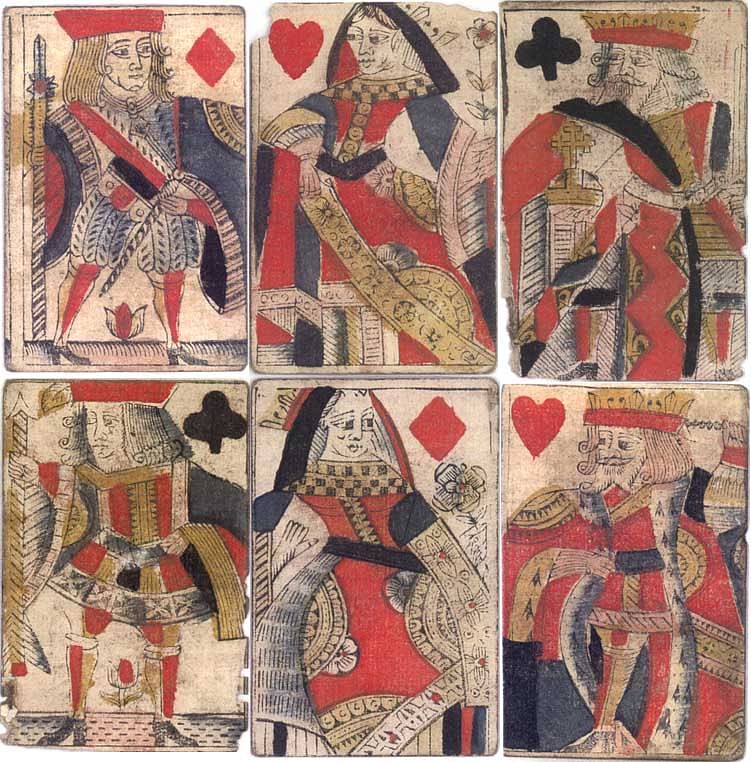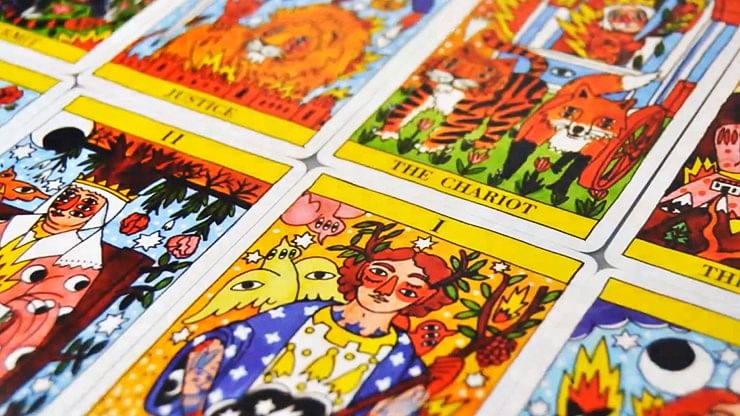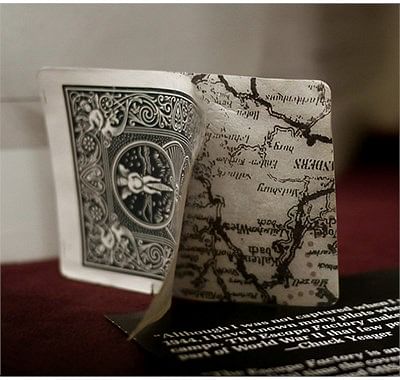Fun Facts About Playing Cards
Whether you’ve played card games like Go Fish, Crazy Eights or Gin Rummy, or entertained your friends with card magic, nearly everyone has used a deck of cards. Yet, most people probably aren’t aware that there’s a lot more to these trusty pasteboards than meets the eye.
Here are some interesting facts about playing cards you probably didn’t know:
More Than 1,000 Years of History
Playing cards have a long history that is believed to have originated in China during the era of the Tang Dynasty in the 9th century. At that time, there were only 32 cards in a deck, a number that corresponded with the maximum combinations of a pair of dice. Therefore, it is believed that playing cards were originally used for dice games or other popular games like Mahjong.
More than 1,000 years later, a deck of cards can be found in nearly every household. In fact, the United States Playing Card Company, one of the world’s largest playing card manufacturers, produces over 100 million decks of cards per year.
Despite rapid advances in technology, many people still use traditional playing cards to play card games or perform magic tricks. Some people even feel that technology may have actually boosted the popularity of playing cards by reinventing classic card games like Solitaire, creating new ones like Freecell, or giving card players a chance to test their luck by playing poker or blackjack on online casino sites.

The Playing Card Calendar
One of the most interesting facts about playing cards is undoubtedly its uncanny connections to a calendar year. While some scholars believe this is pure coincidence, others think that the standard deck of cards was intentionally crafted to symbolize a year of our lives.
We’ll let you decide for yourself!
- 2 Colors: The red and black colors of the suits are believed to represent day and night.
- 4 Suits: The four suits symbolize the four seasons: spring, summer, fall and winter
- 13 Values: Within each suit is 13 values (Ace through King), just like there are roughly 13 lunar cycles in a year or 13 weeks in a quarter.
- 12 Court Cards: There are 12 Court Cards in a deck of cards and 12 months in a year.
- 52 Cards: Just like there are 52 weeks in a year, there are 52 cards in a deck.
Here’s where it gets crazy though…
If you add up all the cards in a deck, starting with the Ace as 1 and the King as 13, you’ll get 364. Add in 1 Joker and that’s 365, or the number of days in a year. Add in the other Joker and you can even account for a leap year.
Mathematical Secrets
This calendar connection is just one of the many amazing mathematical properties hidden within a deck of cards.
For example, there are more possible ways to shuffle a deck of cards than there are atoms that make up Earth. The math behind this is actually pretty easy to understand. It’s simply 52 factorial (52 x 51 x 50, and so on, all the way down to x 4 x 3 x 2 x 1.). If you do the math, you’ll end up with an 8 followed by 67 zeroes.
To put this in perspective—every time you pick up a shuffled deck of playing cards, it’s almost guaranteed that the exact order of the playing cards is one that’s never existed before. In fact, you could change the arrangement of the cards every second and it would still take you over a million years to achieve all the combinations.
Speaking of shuffles, if you perform 8 perfect Faro Out-Shuffles—a special shuffle where the cards are interwoven together one card at a time and the original top and bottom card remain in place—the deck will return to the order it started in. The math behind this is actually quite interesting. But, we’ll let Magician Chris Ramsay take the lead on that one:
Additionally, you can add further evidence to the calendar connection (see above) by spelling out the names of the 13 different types of cards (Jokers excluded). Try it yourself and you’ll get exactly 52 (just like the number of weeks in a year). Take a full deck of cards and start dealing a letter for each card: A-C-E, O-N-E, T-W-O, etc. The 52nd, and final, card you deal will ultimately be the letter “G” in the word “King.”
The images found on most modern decks of cards can be attributed to French playing card creators in the 15th century. These card makers were the first to split a deck into red and black colors and implement the recognizable Clubs, Hearts, Spades and Diamonds suits.
(Bonus Fun Fact: Prior to these modern suits, playing cards used to have Swords, Clubs, Cups and Coins suits that were most likely inspired by Tarot Cards.)

The French also modeled the Court Cards after noteworthy figures from history like Julius Caesar (King of Diamonds), Charlemagne (King of Hearts), King David from the Holy Bible (King of Spades) and Alexander the Great (King of Clubs).
Contrary to popular belief, the Queen of Hearts is not supposed to be Queen Elizabeth I. Despite their striking resemblance, this design was crafted long before Elizabeth’s birth in 1533. All of the Queens actually have ancient inspiration, with the Queen of Hearts being based on a biblical figure named Judith.
British card makers also began to use these same illustrations and played a key role in their mainstream popularity. However, at one point, they also followed a variation known as the “British Rule”. This special rule meant that the rankings of the King and Queen in card games were swapped based on the monarch who was ruling England at the time .
Special Treatment for the Ace of Spades
Have you ever noticed that the Ace of Spades always seem to have a slightly different design than the rest of the playing cards? There is actually some historical significance behind this.
Around the turn of the 18th century, the ruling classes in France and England began cashing in on the surging popularity of playing cards by placing a tax on every deck of cards produced. To prove the tax was paid, each Ace of Spades would need to receive a special stamp.
In 1828, the English took this a step further by making manufacturers purchase a special Ace of Spades. These unique cards would generally be printed with lavish designs and the manufacturer's name, a tradition that continues to this day—particularly in the custom playing card community.
(Bonus Fun Fact: In an attempt to evade taxes, many would try to play card games without an Ace of Spades—eventually giving life to the popular phrase “not playing with a full deck.”)
Playing Cards Once Helped Rescue Prisoners of War
During World War II, an unlikely partnership was formed between American and British intelligence agencies and the United States Playing Card Company. Looking for deceptive ways to rescue allied prisoners of war from German camps, they turned to the playing card giant for help developing a special “Map Deck”.
 These amazing playing cards hid top-secret escape routes within their paper layers. By soaking the cards in water and peeling apart these layers, American and British prisoners could uncover special maps highlighting the best path to safety.
These amazing playing cards hid top-secret escape routes within their paper layers. By soaking the cards in water and peeling apart these layers, American and British prisoners could uncover special maps highlighting the best path to safety.
These decks of cards were a closely-guarded secret for years after the war ended. Nobody truly knows how many were ever produced and there is believed to be only 1 surviving original “Map Deck” in a private collection. However, history buffs and playing card collectors can grab the awesome replica Bicycle Escape Map Playing Cards.
Anti-Cheating Measures
Beyond lasting longer than paper playing cards, plastic playing cards are also significantly more difficult to mark or crease. Therefore, most casinos around the world will use 100% plastic playing cards for poker or other card games to prevent cheating.
(Bonus Fun Fact: When a deck of cards is retired from play, a casino will “cancel” the playing cards by clipping their corners, punching holes through them or adding some other immediately noticeable marking. This is done to prevent the cards from being snuck back into an active game.)
Additionally, paper playing cards aren’t just a piece of paper. They’re actually two or three layers of paper stuck together with a special glue. Beyond serving as an adhesive, this glue core ensures the cards are opaque when held up to light—an especially important feature for card games.
Make sure you've got card magic basics down, or try some prop bets. There's also money magic, mentalism, card magic, sleight of hand, or Zoom magic. If you want a magic store, you're in the right place. For flash paper or magic books or the freshest magic tricks to the classics. We've also got magic conventions! Importantly, we'll teach you how to learn magic tricks and how to learn card tricks.

